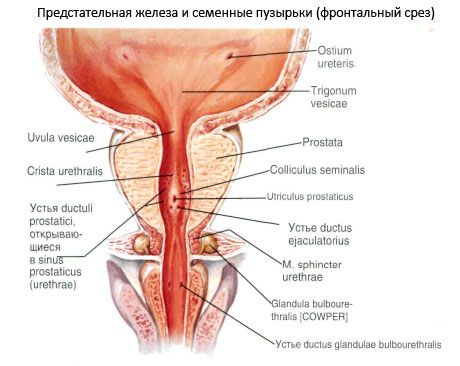Medical expert of the article
New publications
Bulbourethral gland
Last reviewed: 07.07.2025

All iLive content is medically reviewed or fact checked to ensure as much factual accuracy as possible.
We have strict sourcing guidelines and only link to reputable media sites, academic research institutions and, whenever possible, medically peer reviewed studies. Note that the numbers in parentheses ([1], [2], etc.) are clickable links to these studies.
If you feel that any of our content is inaccurate, out-of-date, or otherwise questionable, please select it and press Ctrl + Enter.
The bulbourethral gland (glandula bulbourethralis, Cooper's gland) is a paired organ that secretes a viscous fluid that protects the mucous membrane of the wall of the male urethra from irritation by urine. The bulbourethral glands are located behind the membranous part of the male urethra, in the thickness of the deep transverse muscle of the perineum. The glands are about 0.6 cm apart. The bulbourethral gland is round, has a dense consistency and a yellowish-brown color, a slightly bumpy surface; its diameter is 0.3-0.8 cm.

The bulbourethral gland duct (ductus glandulae bulbourethralis) is thin and long (about 3-4 cm). Piercing the bulb of the penis, these ducts open into the urethra. The secretory sections and excretory ducts of the bulbourethral glands are alveolar-tubular in shape, have numerous expansions.
The initial (secretory) sections of the glands are lined with flattened mucous-type endocrinocytes located on the basement membrane. The inner layer of the duct walls is formed by cubic and prismatic epithelium.
Vessels and nerves of the bulbourethral gland. The blood supply to the bulbourethral glands occurs through branches from the internal genital arteries. Venous blood flows into the veins of the bulb of the penis.
The lymphatic vessels drain into the internal iliac lymph nodes.
The bulbourethral glands are innervated by branches of the pudendal nerve and from plexuses surrounding the arteries and veins (from the venous plexus of the prostate).
What do need to examine?


 [
[